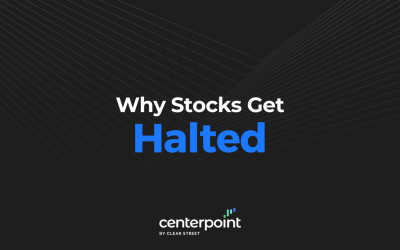“The more things change, the more they stay the same”, is a classic theme that applies not only to the markets but also the day traders that populate them. While it’s easy to click buy and sell orders all day chasing stocks, the key to longevity is having a well defined trading strategy.
Just as the day trading boom in 1999 saw a surge of casual day traders that went bust when the bubble burst, this “new era” of electronic and mobile app trading is seeing a shockingly familiar surge of new day traders chasing another bubble. Unfortunately, many of these beginners will learn the hard way that the stock market is uncanny in its ruthless ability to exploit a trader’s weakness at the worst time. Lack of a day trading strategy is a major Achilles tendon that the market will seize upon sooner or later. Having a day trading strategy is critical to survival.
What is a Day Trading Strategy?
A day trading strategy is a multi-layered methodology that is the foundation for your trading. In a nutshell, it defines what and how you trade.
A strategy is what will prevent you from the ‘deer in the headlights’ syndrome, where you freeze in complete loss as your account implodes. It will also help you capitalize on familiar patterns with confidence and agility. A strategy enables you to navigate throughout the market day sidestepping pitfalls while exploiting market opportunities.
Your Strategy is Your Edge
Having a day trading strategy is what separates you from the hordes of beginners hitting market orders chasing momentum and getting stuck afterwards. A new business wouldn’t just open up shop and hope for the best. They would create a business plan that clearly defines the operating strategy. Trading is the same; it’s your business and requires having a well-defined strategy.
Purpose of a Day Trading Strategy
Just as a business has an operational strategy, a trader should have a day trading strategy as well. The strategy is what separates gambling/guessing and methodical high probability trading.
The strategy guides your trading because it defines how and what you trade. If your strategy consists of trading solely small caps, then stay away from large caps. From a business sense, Walmart is a leader is low-cost high-volume retailer. They wouldn’t launch a luxury store brand because it doesn’t fit their strategy.

Components of a Day Trading Strategy
A day trading strategy is comprised of three components: trading style, stock types, and set-ups. This is the starting template.
Keep in mind that as you gain experience with trading, you will discover more elements under each component which is how you drive the refinement of your strategy. Each of these components should converge together to define what and how you trade. Let’s review them.

Trading Style
While you can test out different styles of trading, you will ultimately discover what trading style fits your persona. If you’re someone who prefers to get in and get out of trades within minutes with little tolerance for holding positions for hours, then you’re a scalper.
A scalper primarily seeks to get in and out of trades within minutes to capitalize on smaller price moves. Scalpers are risk adverse traders that will use larger share size allocations to trade high probability set-ups to “scalp” smaller price moves and price targets. Scalpers believe that exposure comes in the form of position size and holding time. Larger position sizes are offset by smaller holding periods anchored by high probability set-ups.
A position or swing trader seeks larger price moves and may hold multiple stock positions with the patience and temperament to hold for hours to days. They don’t care for small incremental price moves, rather use bigger profit targets with smaller size allocations.

Stock Types
These can be segmented by market capitalization and or industry or theme. Small-cap stocks tend to be lower priced, riskier and can have large percentage price swings due to the smaller liquidity. Large-caps have tremendous liquidity but tend to be more expensive, which requires more risk capital. Some traders may prefer to trade just semiconductor stocks while others will play themes that have tremendous momentum like electric vehicle (EV) stocks or special purpose acquisition companies (SPACs).
Set-Ups
These are the specific patterns and catalysts that define when to pull the trigger on a trade. They can range from technical patterns like breakouts, breakdowns, reversions and reversals to defined price patterns like double tops, double bottoms, head-and-shoulders and cup and handles. Fundamental set-ups consists of news, rumors, events (earnings and press releases) and legal rulings to financial metrics like price-earnings, cash-per-share, free cash flow and enterprise value. Utilizing a combination or sticking to just a handful of set-ups is a matter of preference.

Optimizing a Day Trading Strategy
Putting together a day trading strategy is not a one-off process. It requires consistent optimization.
With more experience, you will discover what components of the strategy suit you the best. The key is not knowing everything up front but being aware of the components so you can define them and put together your strategy as you gain experience.
Here is the process of creating and refining a day trading strategy.
Define Your Strategy
Start actively defining your strategy under the three components that make up the template for your day trading strategy. Are you a scalper that prefers to take quick profits on reversion trades during the first 30-minutes of the market open on gappers? Do you prefer waiting to enter breakouts in mid-cap ecommerce stocks or entering on trend pullbacks on large-cap S&P 500 stocks? Do you prefer playing 15-minute bull flag breakouts on stocks that making new weekly highs?

Execute Your Strategy
Trade executions and management defines how you enter, manage and exit the position(s). Here’s some questions to help you execute your strategy. Do you prefer to select a price level support and scale into a position by sprinkling incremental bids or enter the position in one trade? Do you prefer to scale out of positions or exit in one trade? Do you use a price-based or percentage-based stop loss? Is it a mental stop or an automated trailing stop-loss on your platform? Are you using a direct market access (DMA) broker to route your orders?
Refine Your Strategy
As you ponder the questions to define and execute your strategy, you will discover what works and what doesn’t for you. Be conscious of this and avoid the urge to keep pressing things that don’t work. Take a clinical approach to constantly step back and note what has been effective and what has been ineffective. Are you realizing that you don’t have the temperament to hold a position more than 10-minutes at most? Do you find that small-caps are just too volatile as you chase entries and the bids evaporate too fast? Try to be as detailed as possible on a micro basis but analyze on a macro basis to extract your strengths and weaknesses from the data. This is how you refine your strategy by doubling down on your strengths and try to minimize your weaknesses.
To keep a strategy robust and dynamic, it needs constant refinement to help you better adapt to current market conditions. Being aware of the day trading strategy template as your starting point and optimization is the constant work in progress that can drive your evolution as a day trader.







